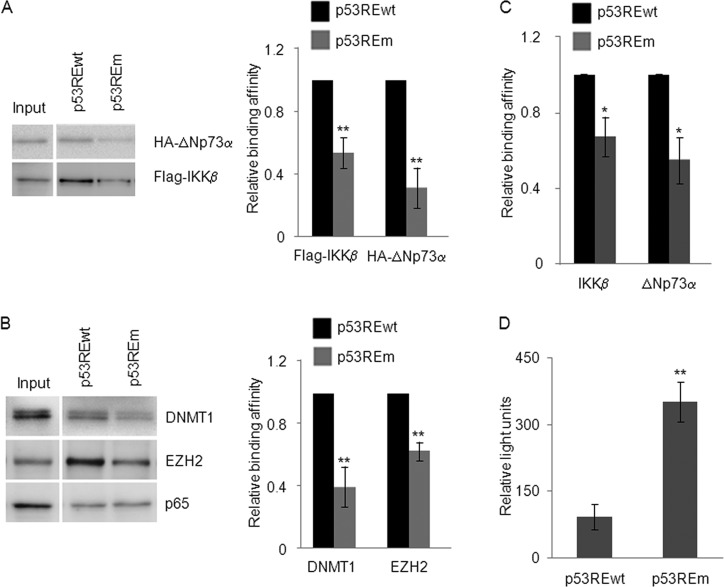Fig 3.
EZH2 and DNMT1, like ΔNp73α and IKKβ, bind to p53RE on the PIG3 promoter. (A and B) 38E6E7 HFK transiently expressing HA-ΔNp73α and Flag-IKKβ were processed for the oligonucleotide pulldown assay. Two milligrams of cell lysate was incubated with biotinylated probes containing the p53RE of the PIG3 promoter, either wild-type (p53REwt) or mutated (p53REm). DNA-associated proteins were recovered by precipitation with streptavidin beads and analyzed by IB with the indicated antibodies (left panel). Protein band intensities of three independent IB for each experiment were quantified by Image Lab (Bio-Rad) and shown in the right panels. The results are the average of three independent experiments. The differences in the binding affinity of IKKβ and ΔNp73α to the p53REwt versus p53REm probes are significant (**, P < 0.01). (C) The oligonucleotide pulldown assay was performed using 2 mg of cell lysate from untransfected 38E6E7 HFK, as explained for panels A and B. The results are the average of two independent experiments. *, P < 0.05 for p53REm versus the corresponding p53REwt sample. (D) 38E6E7 HFK were transfected with PIG3 promoter-firefly luciferase reporter construct harboring either a wild-type or mutated p53RE and with a Renilla construct. At 24 h after transfection, cells were processed for the luciferase assay. Relative light units (RLU) values are represented in the histogram. The data shown are the mean values of three independent experiments performed in triplicate. The differences in the luciferase activity between mutated and wild-type promoter are significant (**, P < 0.01).

